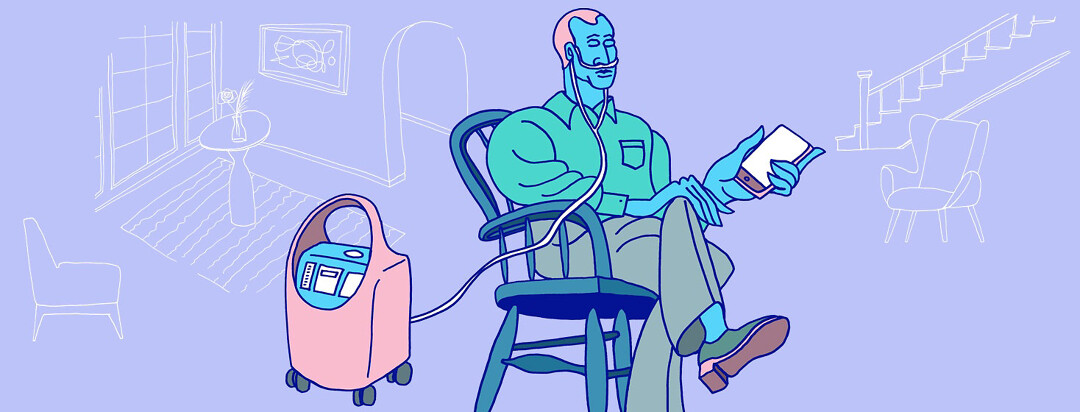Long-Term Oxygen Use and COPD
Long-term oxygen therapy (LTOT) is a treatment option for some people with chronic obstructive pulmonary disease (COPD). This lasting lung illness can hinder airflow and result in low oxygen levels known as hypoxemia. People who do not get enough oxygen often feel tired and short of breath. Oxygen therapy targets these symptoms and offers aid by raising the level of oxygen in the blood.1,2
Is long-term oxygen use common?
Only a small amount of people with COPD use oxygen therapy on a long-term basis. Some people with COPD do not use oxygen therapy at all, while others use it only for a short time. One study found that fewer than 1 million of the 16 million people in the United States with COPD use LTOT.1-3
Other options
Medications
Taking extra oxygen is just 1 of the possible treatments for COPD. Drugs are also used to treat COPD. Doctors may prescribe drugs that fight or prevent infection, reduce inflamed and swollen tissue, and relax airway muscles.1-2,4-5
Pulmonary rehab
Pulmonary rehabilitation (rehab) is another common treatment for COPD. For people with extreme cases of COPD, doctors may suggest surgery to make their breathing better.1-2,4-5
Lifestyle changes
Along with medical treatments, lifestyle changes can help people with COPD manage their condition. Some people keep away from smoke and other toxins in the air. Others strive to decrease stress and increase the amount of exercise, nutrients, and rest they get.1-2,4
Positive Impacts
Longer life
A number of people with COPD benefit from taking extra oxygen on a regular basis over an extended period. To date, most studies about long-term oxygen use have focused on people with COPD who have extremely low oxygen levels. These studies have shown that LTOT increases the length of life for this group of people. LTOT lowered the death rate among these people.6
Better exercise
LTOT does have some benefit for people with COPD who have only minor decreases in oxygen levels. A review of various studies showed that these people had less shortness of breath during excise when they used extra oxygen. This benefit is vital for people with COPD who rely on exercise alone or as part of a pulmonary rehab program to help manage their illness.2,6
Negative Impacts
LTOT has some drawbacks. The primary drawbacks include the price and the special equipment required. Both factors can bring added stress, which is something most people with chronic illnesses try to reduce.2,6
Cost
Oxygen therapy is more costly than the other treatment options, especially when used for a long time. The cost is a big factor for people with chronic illnesses because of the ongoing nature of their condition.2,6
Special equipment
People need direction on how to get, correctly use, and maintain each piece of equipment used in oxygen therapy. There are systems that draw oxygen from the air, and tanks that are filled with liquid oxygen. While smaller systems and tanks are made for travel, the ones designed for use in the home can be large and take up lots of space.2
Risk of infection
Certain equipment used in oxygen therapy, like the plastic tube and prongs that transport the oxygen into the nose, must be cleaned well on a routine basis. Dirty items pose a risk of infection. Infections can make COPD worse.1,2
Things to consider
Despite the drawbacks, LTOT is a treatment option that benefits some people with COPD. LTOT may be a good choice for people with COPD who have extremely low oxygen levels. Even if oxygen levels are not extremely low, some people still choose LTOT to ease shortness of breath so they can exercise with less effort. A doctor will assess each person’s condition before suggesting LTOT as a treatment for COPD.
Your doctor can discuss the benefits and drawbacks of oxygen therapy for COPD in more detail with you. They can also help you determine if long-term oxygen use is right for you. If you decide the benefits outweigh the drawbacks, your doctor can prescribe the amount of oxygen you need for as long as you need it. Be sure to ask your doctor and your pharmacist about programs that help cover the cost of LTOT.

Join the conversation